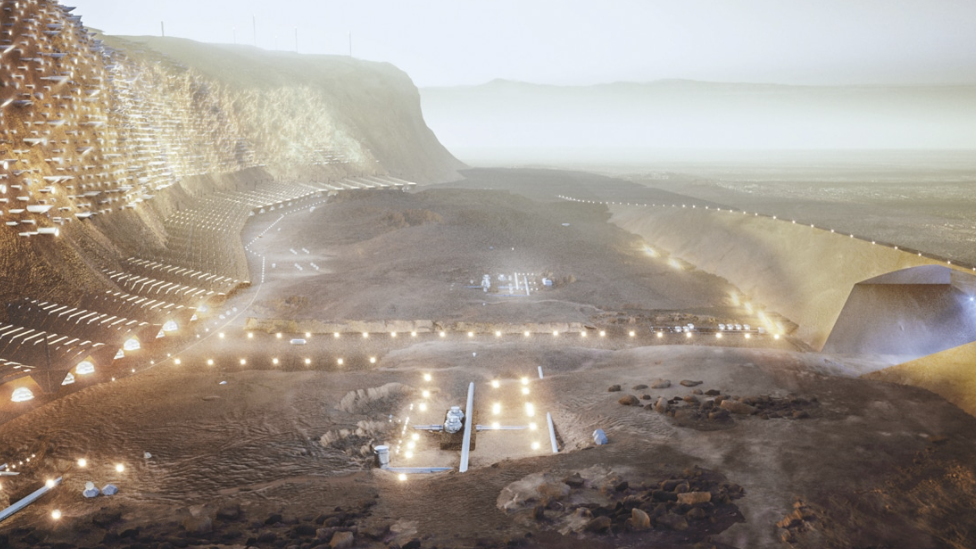Life on Mars: Here's what the planet's first city might look like
- Published

They've called the imagined city NΓΌwa, after a mythological Chinese goddess and think around 250,000 people could live there.
But rather than buildings being spread out across the planet's horizontal surface, the city has instead been build vertically with the buildings and structures inserted into the rock of the cliff face.
This means it is protected from radiation and meteorites while having access to indirect sunlight - pretty clever!
They imagine that people would live and work in these βmacro-buildingsβ, made by tunnelling through the rock of the cliff, which would be linked together by a 3D network of tunnels.
The highest point of the cliff is the Mesa. This vast plain is where everything needed for manufacturing, food production, and energy generation, would be found.
They've made the most of the planet's natural landscape in the plans, placing the city at the slope of one of the Martian cliffs with good access to water from Tempe Mensa.
The spaces at the cliff face are called βGreen-Domes,β and can either be used as parks, or to grow experimental vegetation in the Martian atmosphere.
After a short initial phase relying on money and supplies from Earth, the community in NΓΌwa should be able to provide for themselves themselves through locally grown produce.
Crops grown there would be the main source of food, as well as changing the carbon dioxide into oxygen and taking part in the water processing system.
- Published20 February 2021
- Published24 May 2020
- Published29 August 2016
